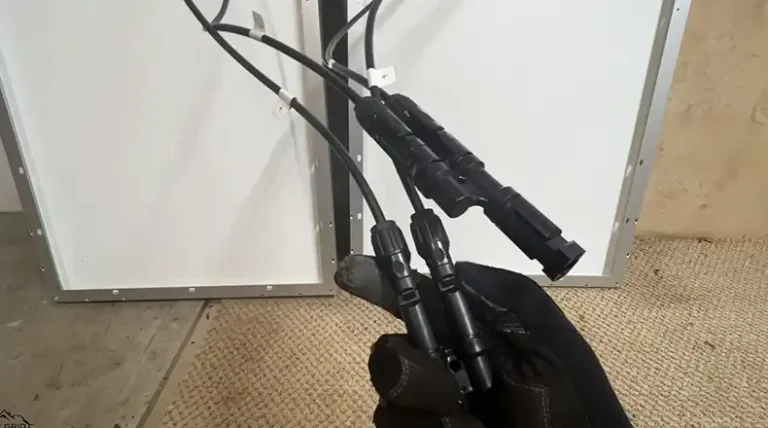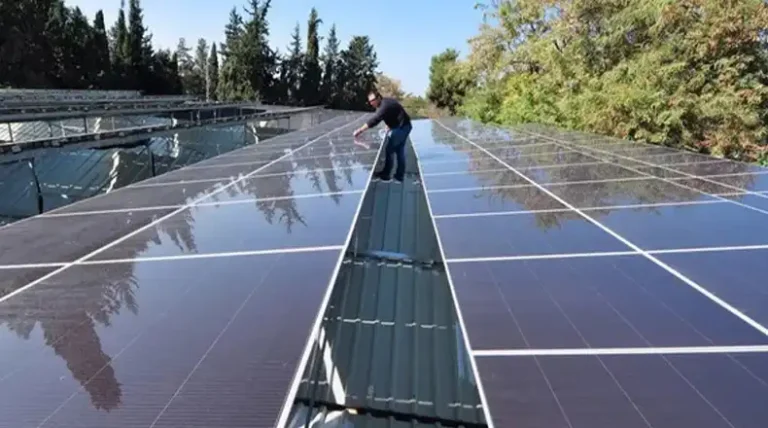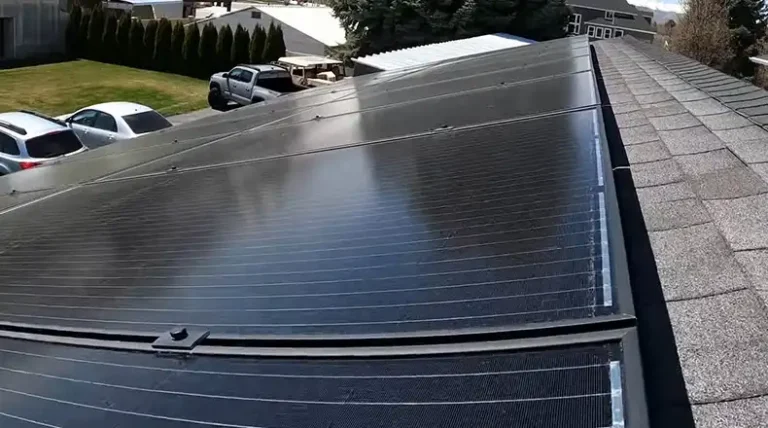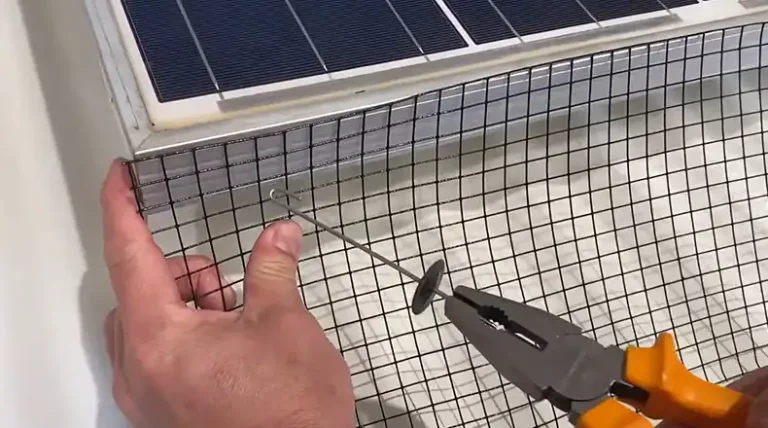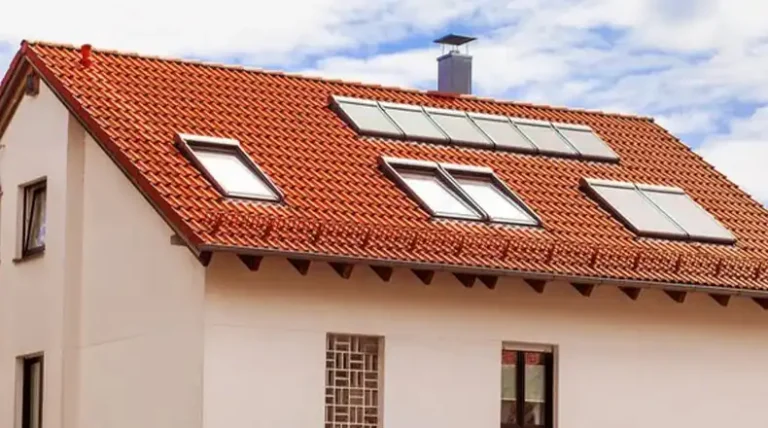Can You Transfer a Solar Loan?
According to the Solar Energy Industries Association (SEIA), the U.S. installed 23.6 gigawatts of solar photovoltaic (PV) capacity in 2022, representing a staggering 38% increase over the previous year.
As more homeowners embrace solar power, a growing number of them are financing their systems through solar loans. However, when it comes time to sell their homes, many are faced with the question: “Can you transfer a solar loan?”
Yes, in many cases solar loans can be transferred to new homeowners when selling a property with an existing solar system. However, the ability to transfer a solar loan depends on the specific loan terms, lender policies, and meeting the necessary requirements like a credit check.

Solar Loan Transferability
Solar loans can be categorized as either transferable or non-transferable, depending on the lender’s policies and the loan terms.
Transferable Solar Loans
Transferable solar loans allow homeowners to transfer the loan to the new homeowner when selling their property. This can be an attractive option for buyers, as they can continue to enjoy the benefits of the solar system while making loan payments.
The transferability of a solar loan is typically determined by the following factors:
- Loan Terms: Some lenders explicitly state in the loan agreement whether the loan is transferable or not. It’s crucial to review your loan documents carefully.
- Lender Policies: Even if the loan terms don’t explicitly mention transferability, some lenders may still allow loan transfers based on their internal policies.
- Loan Type: Certain types of solar loans, such as those backed by government agencies like the Federal Housing Administration (FHA) or the Department of Veterans Affairs (VA), may have different transfer requirements.
Non-Transferable Solar Loans
Non-transferable solar loans cannot be transferred to the new homeowner when selling the property. In such cases, homeowners have a few options:
- Pay off the remaining loan balance at closing.
- Refinance the solar loan with a new lender, potentially securing better terms or a lower interest rate for the new homeowner.
- Sell the solar system to the new homeowner (if allowed by the loan agreement).
It’s essential to understand the transferability of your solar loan early in the selling process to avoid any surprises or delays.
State Regulations and Solar Loan Transferability
It’s worth noting that solar loan transferability may vary by state due to regulations and policies. Some states have implemented specific guidelines or requirements for transferring solar loans, while others defer to the lender’s policies.
For example, in California, the state’s solar consumer protection guide outlines specific requirements for solar loan transfers, such as obtaining written consent from the lender and ensuring the new homeowner meets the lender’s credit and income qualifications.
If you’re unsure about the regulations in your state, consult with your lender or a local solar professional for guidance.
The Process of Transferring a Solar Loan
If your solar loan is transferable, the process typically involves the following steps:
Step 1: Initiate the Transfer Process
The process of transferring a solar loan can be initiated by either the seller or the buyer. It’s generally recommended for the seller to start the process early, as it can take several weeks or even months to complete.
As soon as you have a potential buyer interested in assuming the solar loan, contact your lender to inform them of your intention to transfer the loan. Provide them with the necessary details, such as the prospective buyer’s information and the anticipated closing date.
Step 2: Early Communication with the Lender
Open and proactive communication with your lender is crucial throughout the solar loan transfer process. Here are some best practices to follow:
- Notify the lender as soon as possible about your plans to sell the property and transfer the loan.
- Ask the lender for their specific requirements and documentation needed for the transfer process.
- Inquire about any fees or charges associated with the transfer, such as application fees or processing fees.
- Keep the lender updated on any changes or delays in the selling process.
By maintaining clear communication from the outset, you can help ensure a smoother and more efficient transfer process.
Step 3: Buyer Approval and Qualifications
Once the transfer process is initiated, the lender will evaluate the new homebuyer’s creditworthiness and ability to assume the solar loan. This typically involves the following steps:
- Credit Check: The lender will conduct a credit check on the buyer to ensure they meet the minimum credit score requirements.
- Income Verification: The buyer may need to provide proof of income, such as pay stubs or tax returns, to demonstrate their ability to make the loan payments.
- Debt-to-Income Ratio: The lender will assess the buyer’s debt-to-income ratio to ensure they have sufficient cash flow to manage the solar loan payments.
It’s essential for the buyer to be prepared to provide all necessary documentation and meet the lender’s qualifications to avoid delays or potential denial of the loan transfer.
Step 4: Application and Required Documentation
If the buyer meets the lender’s qualifications, they will typically need to complete a loan transfer application. The required documentation may include:
- Proof of identity (e.g., driver’s license, passport)
- Employment and income verification (e.g., pay stubs, tax returns)
- Consent from the seller to transfer the loan
- Home inspection report (if required by the lender)
- Any additional documents requested by the lender
Providing complete and accurate documentation upfront can help expedite the transfer process.
Step 5: Lender Fees and Paperwork Processing
Most lenders charge fees associated with transferring a solar loan, which can vary depending on the lender and the specifics of the loan. Common fees may include:
- Application fee or processing fee
- Credit check fee
- Title transfer fee
- Closing costs or settlement fees
Once the buyer’s application and documentation are complete, the lender will process the paperwork and prepare the necessary legal documents for the loan transfer. This typically involves drafting a new loan agreement or addendum to the existing agreement.
Step 6: Closing and Finalizing the Transfer
The final step in the solar loan transfer process is the closing, where the necessary documents are signed, and the transfer is officially completed. This may occur concurrently with the closing of the home sale or as a separate closing event.
During the closing, the following typically occurs:
- The buyer and seller (or their representatives) sign the loan transfer documents.
- Any applicable fees or charges are paid.
- The lender officially transfers the solar loan to the new homeowner’s name.
After the closing, the new homeowner becomes responsible for making the solar loan payments and adhering to the terms of the loan agreement.
Alternatives to Transferring a Solar Loan
If your solar loan is non-transferable or if the transfer process proves too challenging, there are alternative options to consider:
Option 1: Paying Off the Remaining Loan Balance at Closing
One straightforward alternative is to pay off the remaining balance of your solar loan at the time of closing the home sale. However, it’s essential to factor in any potential prepayment penalties or fees associated with early loan payoff.
To calculate the total cost of paying off your solar loan, you’ll need to consider the following:
- Remaining loan balance
- Prepayment penalty (if applicable)
- Any additional fees charged by the lender (e.g., processing fees, settlement fees)
Once you have these figures, you can determine the total payoff amount and factor it into your closing costs.
Here’s an example calculation:
- Remaining loan balance: $15,000
- Prepayment penalty: 2% of the remaining balance ($300)
- Lender fees: $250
- Total payoff amount: $15,000 + $300 + $250 = $15,550
It’s crucial to discuss the loan payoff option with your lender well in advance to ensure you have accurate figures and understand any potential fees or penalties.
Option 2: Refinancing the Solar Loan with a New Lender
Another alternative is to refinance your existing solar loan with a new lender, potentially securing better terms or a lower interest rate for the new homeowner. The process of refinancing a solar loan typically involves the following steps:
- Shop Around and Compare Lenders: Research different lenders and compare their interest rates, fees, and loan terms to find the best deal.
- Apply for Refinancing: Complete the application process with the new lender, providing necessary documentation such as proof of income, employment information, and credit reports.
- Underwriting and Approval: The new lender will review your application and conduct their due diligence, including a credit check and income verification.
- Closing and Loan Payoff: If approved, you’ll proceed to closing, where the new loan will be used to pay off the existing solar loan, and the new loan terms will take effect.
Here’s an example scenario where refinancing may be beneficial:
- Existing solar loan: $20,000 balance, 6% interest rate, 15 years remaining
- New loan offer: 4.5% interest rate, 15-year term
- Estimated closing costs and fees: $2,500
In this case, refinancing could potentially save you thousands of dollars in interest over the remaining loan term, making it a worthwhile option despite the upfront closing costs.
However, it’s essential to run the numbers carefully and consult with a financial advisor or loan professional to determine the most suitable option for your specific situation.
FAQs
Can I transfer my solar lease or power purchase agreement (PPA) to the new homeowner?
No, solar leases and PPAs are typically not transferable. These agreements are between the homeowner and the third-party provider, and they cannot be transferred to a new homeowner. In such cases, the new homeowner would need to either negotiate their own lease or PPA with the provider or consider purchasing the solar system outright.
Will transferring my solar loan affect my credit score?
Transferring a solar loan should not directly impact your credit score, as the loan is being transferred to the new homeowner. However, it’s important to maintain timely payments and a good credit history throughout the transfer process to avoid any negative effects on your credit.
Can I sell my solar system to the new homeowner instead of transferring the loan?
In some cases, yes. If your solar loan agreement allows it, you may be able to sell the solar system to the new homeowner outright. This would involve paying off the remaining loan balance and transferring ownership of the system. However, be sure to check with your lender about any specific requirements or restrictions.
What happens if the new homeowner defaults on the solar loan after the transfer?
If the new homeowner fails to make payments on the transferred solar loan, the lender may take legal action against them, potentially leading to consequences such as late fees, negative credit impacts, or even foreclosure. As the original borrower, you would not be held responsible for the new homeowner’s default, as the loan has been officially transferred to their name.


